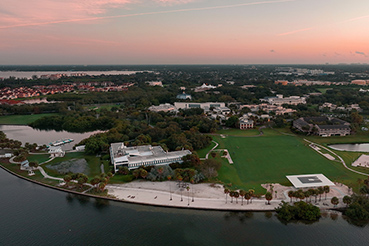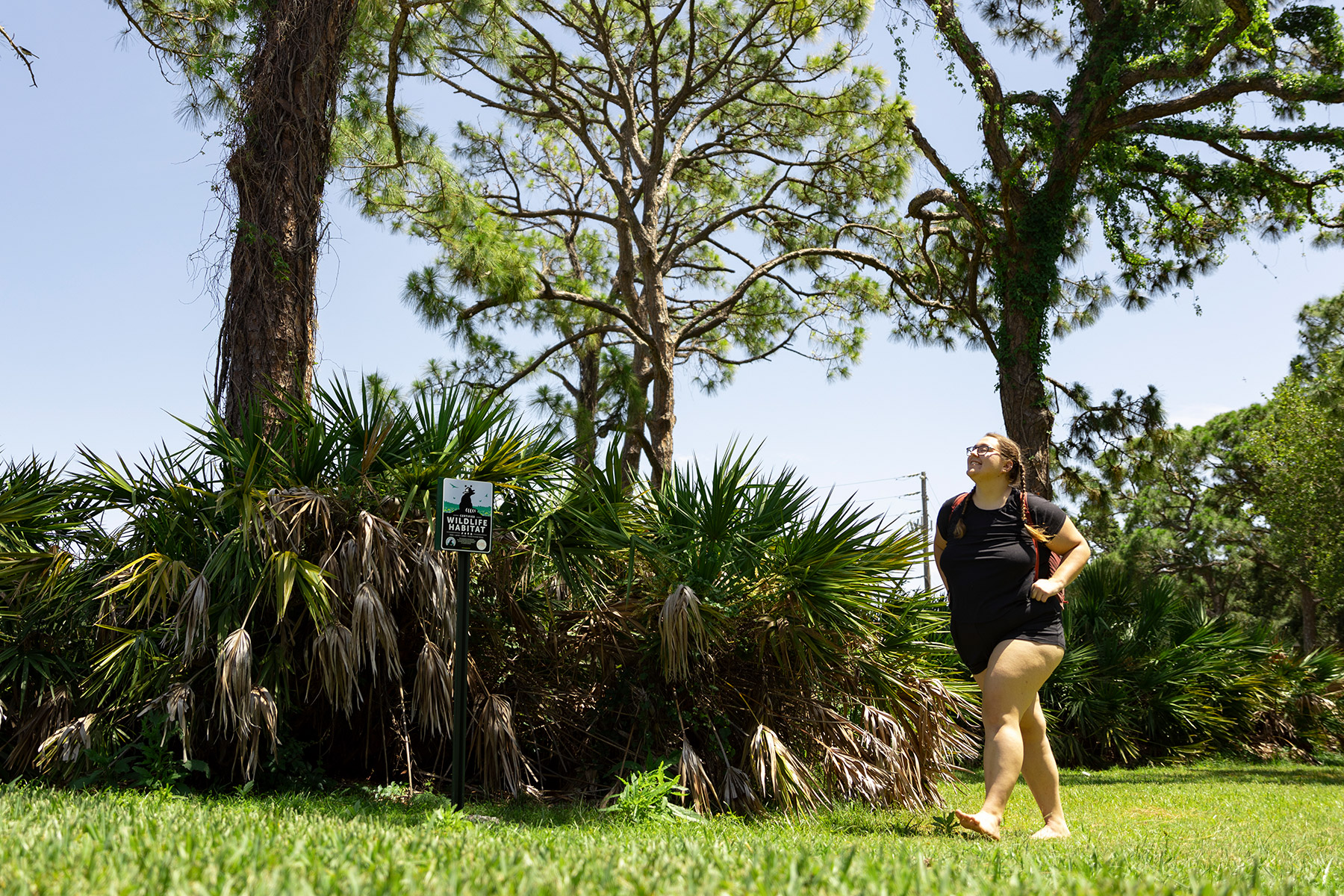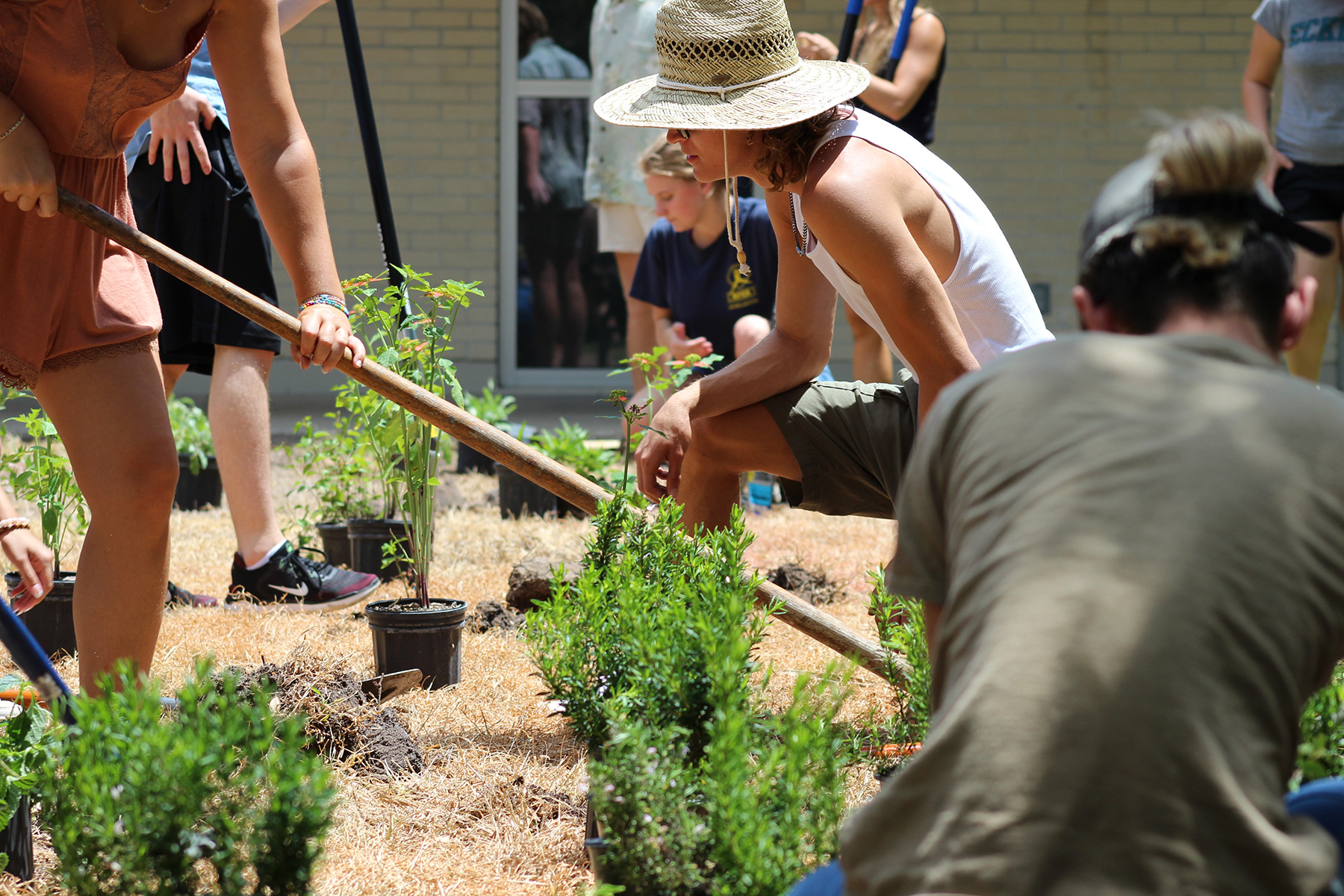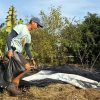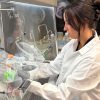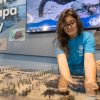Junior Evie Moulin strolls past a stand of saw palmettos and pine trees, a newly certified wildlife habitat where a family of great horned owls nests overhead. Photo by Penh Alicandro ’22
Earlier this semester, signs were posted in the grass asking for silence to protect the owls nesting in the tall pine trees. Through binoculars, you could see their nest and two great horned owlets poking their heads out over the stack of sticks.
This oasis between the trees is just one of nine areas on the Eckerd College campus to be recently certified as an official wildlife habitat by the National Wildlife Federation.
Soon these nine areas will be marked with official signage from the Federation. Their locations include: the Palm Hammock, the Environmental Sciences quad, Alumni Grove, the Iota residence-hall plant bed, the trees between the Upham Administration and Seibert buildings, the small pond outside the James Center for Molecular and Life Sciences, the Behavioral Sciences building patio and two areas surrounding Wireman Chapel.
To be eligible for certification, an area must have sources of food and water, cover for shelter, and a place to raise young. The area must be managed sustainably to maintain air, water and soil quality. Grounds Manager Darla Ostenson says Eckerd’s retention ponds make the campus an ideal environment for wildlife habitats. Additionally, Eckerd’s wastewater reduction practices (such as using reclaimed water in the sprinklers) and reduced use of pesticides fit the sustainable criteria for certification.
The green space outside the Environmental Sciences building was developed a few years ago to support pollinators. Ostenson—who is employed by Sodexo, Eckerd’s facilities management company—is passionate about native plants, so this project was really close to her heart. Still, there have been some complaints about the aesthetics.
Pollinators thrive among the native plants located in the wildlife habitats.
Native plants aren’t always the most beautiful option, but they are the healthiest for the environment, she says. The NWF certifications are an effort to increase awareness of Eckerd’s commitment to restoring the natural ecosystem.
“Maybe people would like these spaces more if they understood what the plants and areas are supporting,” Ostenson says.
She first proposed the certification at the beginning of March at an Environmental Affairs faculty committee meeting. Everyone was on board, and the certifications were funded by the Eckerd College Organization of Students and the Office of Sustainability.
“Even faculty outside the environmental disciplines bought in,” Ostenson says.
All of the signs should be installed on campus soon; they are just one task on the groundsworkers’ long to-do list. Once the signs are erected, a QR code will be attached to each sign. This code will connect users to a webpage providing information about the plants in those areas. “We are part of this planet, we are part of nature and we need habitat for our own survival,” Ostenson says. That’s why this project is so important to her—and why protecting the native species that have made our campus home is a mission she remains passionate about.

